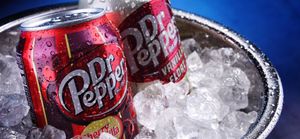As urban commuters increasingly seek sustainable transportation solutions, the best electric unicycle has emerged as a compelling option for navigating daily weather challenges. Yet, the unpredictable nature of weather—from sudden downpours to extreme temperatures—poses unique obstacles for riders committed to year-round mobility. Understanding how these personal electric vehicles handle rain, snow, heat, and varying terrain conditions becomes crucial for reliable daily commuting.
The key to selecting the right electric unicycle lies in evaluating three critical aspects: weather-resistant construction, adaptable performance features, and comprehensive safety systems. This guide explores how modern electric unicycles tackle these environmental challenges, offering practical insights into the features and technologies that ensure consistent performance regardless of weather conditions. Whether you're facing morning fog, afternoon heat, or evening storms, we'll examine the solutions that keep you rolling confidently through any weather scenario.
Critical Weather Resistance Features for Daily Commuting
Weather resistance stands as the cornerstone of reliable electric unicycle performance in challenging conditions. The most dependable models feature comprehensive IP65 or higher ratings, ensuring protection against water spray from any angle and dust infiltration. This weatherproofing extends beyond basic rain protection, incorporating sealed battery compartments and waterproof connector designs that maintain integrity even during heavy downpours.
Temperature management systems play an equally crucial role, with advanced thermal regulation preventing performance degradation in both freezing winters and scorching summers. Leading manufacturers like INMOTION implement multi-layer protection, including specialized thermal paste for electronics and strategically placed heat sinks that maintain optimal operating temperatures between -4°F and 140°F. Corrosion resistance comes from aerospace-grade aluminum alloys and specialized coatings that protect vital components from salt spray and humidity.
Real-world testing protocols simulate years of exposure to harsh conditions, including repeated freeze-thaw cycles, salt fog chambers, and extended water exposure tests. These features work together to ensure consistent performance across diverse weather conditions, from morning dew to winter slush, making daily commuting reliable regardless of forecast challenges.

Solving Range Anxiety: Batteries and Charging Solutions
Real-World Mileage Requirements
Understanding your actual range needs starts with analyzing your daily commute patterns, including detours and unexpected route changes. Most urban commuters require 15-25 miles of daily range, but weather conditions significantly impact battery performance. Cold weather can reduce range by up to 30%, while intense heat may affect battery efficiency by 10-15%. Modern electric unicycles demonstrate consistent range performance, maintaining 25-30 miles even in challenging conditions through advanced battery management systems.
Fast Charging Capabilities
Today's electric unicycles incorporate rapid charging technologies that can replenish 80% capacity in under two hours. Portable chargers weighing less than two pounds easily fit in backpacks, enabling opportunistic charging during workday breaks. Public charging networks increasingly accommodate personal electric vehicles through standard outlets, while built-in charging protection systems prevent damage from voltage fluctuations. Smart charging protocols automatically adjust power delivery based on temperature and battery condition.
Battery Preservation Techniques
Maximizing battery longevity requires maintaining charge levels between 20% and 80% during regular use. Store your device in climate-controlled environments, ideally between 50°F and 77°F, when not in use. Implement a regular charging schedule that avoids both complete depletion and constant top-ups. Modern battery management systems track charging cycles and provide maintenance reminders, while thermal monitoring prevents charging outside safe temperature ranges.

Tire Technology: Your First Line of Weather Defense
Tread Patterns and Compound Options
Modern electric unicycle tire options offer specialized solutions for varying weather conditions. Premium models feature dual-compound rubber that maintains flexibility in cold while providing durability in heat. Wide grooved patterns excel in wet conditions, channeling water away to prevent hydroplaning, while slick center sections optimize efficiency on dry pavement. Advanced silica compounds enhance grip in temperatures ranging from 32°F to 100°F without compromising wear resistance. Winter riders benefit from micro-siping technology that creates thousands of biting edges for ice traction, eliminating the need for traditional studs.
Pressure Management Systems
Maintaining optimal tire pressure becomes critical as weather conditions change. Built-in air pump systems allow quick pressure adjustments, typically requiring 45-50 PSI in warm weather and 40-45 PSI in cold conditions for optimal performance. Smart pressure monitoring systems provide real-time alerts through mobile apps, warning riders of sudden pressure changes. Advanced sealing technologies, including tubeless-ready designs and self-healing compounds, actively prevent slow leaks common in temperature fluctuations.
Troubleshooting Traction Issues
Effective weather navigation requires proactive traction management. In wet conditions, maintain steady speeds below 15 mph and avoid sudden movements that could break traction. For snow and ice, reduce tire pressure by 5 PSI to increase contact patch size, and consider texture-enhanced tire covers for temporary extreme conditions. Implement a post-ride inspection routine checking for debris lodged in tread patterns, unusual wear patterns, and ensuring proper rotation of the tire to maintain even wear across all surfaces.
Commuter-Focused Design Elements
Modern electric unicycles strike a crucial balance between portability and stability through innovative design elements that enhance all-weather usability. Leading models achieve optimal weight distribution by positioning the battery mass low and central, enabling confident handling even in challenging conditions while remaining manageable for carrying up stairs or onto public transit.
Ergonomic features include strategically placed grip points with weather-resistant rubberized surfaces and retractable handles that maintain functionality even when wet. Smart accessory integration revolutionizes weather adaptation through standardized mounting points that accommodate quick-release fenders, splash guards, and LED visibility packages. These mounts utilize corrosion-resistant stainless steel inserts and tool-free mechanisms for rapid deployment of weather protection.
Visibility solutions incorporate active and passive elements, including high-intensity LED strips with 270-degree visibility, reflective side panels that maintain effectiveness when wet, and programmable running lights that automatically adjust brightness based on ambient conditions. Additional commuter-centric features include integrated cable locks secured within weather-sealed compartments, quick-access storage for rain gear, and smart ventilation systems that prevent internal condensation while maintaining water resistance. These design elements work together to create a cohesive system that adapts to changing weather conditions while maintaining the practical requirements of daily commuting.
Mastering All-Weather Electric Unicycle Performance
Mastering daily weather challenges on an electric unicycle requires a comprehensive understanding of key features and proper maintenance practices. Modern electric unicycles excel through robust weather resistance systems that protect vital components, while advanced battery technologies ensure reliable range even in temperature extremes. The combination of smart charging solutions and proper battery care protocols maintains consistent performance throughout changing seasons. Tire technology serves as the crucial interface between rider and road, with innovative tread patterns and pressure management systems adapting to various weather conditions.
When these elements work in harmony with thoughtful design features like integrated weather protection and enhanced visibility systems, riders can confidently navigate their daily commutes regardless of weather conditions. By carefully evaluating these features and implementing proper maintenance routines, commuters can transform their electric unicycle from a fair-weather transport option into a dependable year-round mobility solution that stands up to nature's toughest challenges.
Media Contact
Company Name: INMOTION
Contact Person: Andrew Miller
Email: Send Email
City: New York
Country: United States
Website: https://inmotionworld.com





